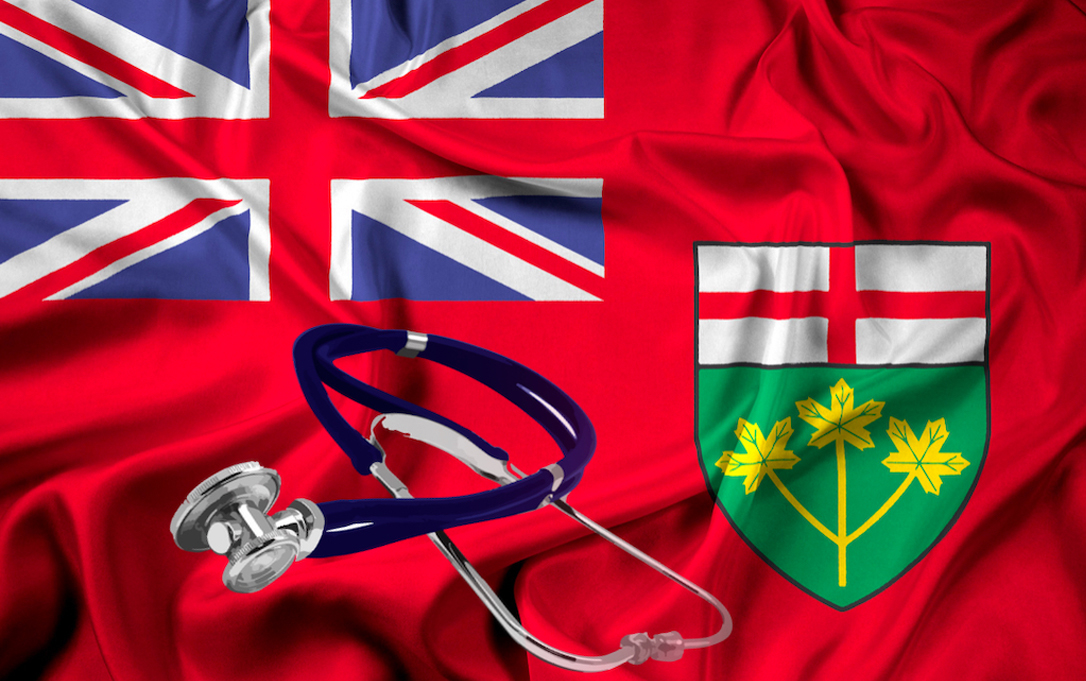By Dr. Bob Bell, Stefan Superina, and Dr. Danyaal Raza
Over the past few months, we have enjoyed reviewing the literature, government data and media reports comparing health care systems in wealthy countries. Most of these reviews have related to country-wide systems- Australia, Britain’s NHS, Germany, Sweden, Switzerland. Two pieces have focused on regional delivery organizations- the Canterbury region in New Zealand and the Kaiser Permanente Health HMO that is mainly located in California and the western USA. These pieces can all be found under the International Health System Profiles section of drbobbell.com.
In this finale to the series we will review the resources available that permit comparison of health systems. We will then recount six fundamental lessons learned that we believe are necessary for Ontario’s (and in some cases Canada’s) health system to improve.
What Evidence is Available to Compare Health Systems?
The key resource for evaluation of national health systems is the OECD database which gathers government administrative files from OECD countries in a readily accessible format.
This respected international body provides a plethora of administrative information related to system cost, health status, system resources, utilization, quality measures and public health outcomes. Many of the most pertinent indicators for system comparison in the ten wealthiest OECD countries have been gathered in one place for easy reference by Papanicolas et al. in JAMA.
Despite the reliability and comprehensive nature of OECD information, there is limited data available related to patient experience. In particular, it is difficult to make meaningful comparisons between countries related to how long patients wait for service.
The OECD data base presents wait times for cataracts, total joint replacements, hysterectomy, prostatectomy and coronary artery surgery. However, the data set is limited to Wait 2 times (how long does the patient wait for surgery following surgical consultation), does not account for waiting times for non-surgical consultation, and is limited as to national inclusion within the database.
For example, Canada does not appear in the OECD wait times data because we have no uniform method for collecting and publishing wait time information across the country. Some provinces (Ontario in particular) collect and regularly publish wait times data in richer detail than virtually any other country. But this data must be gathered from each province individually in comparing our wait time performance.
Since wait times are so critical to evaluating the patient/client experience in various health systems, the Commonwealth Fund has supported data collection to compare access to care in wealthier health systems.
However, more than 90% of Commonwealth Fund indicators are survey-based so it is critical that the methodology of the surveys is understood if the Commonwealth Fund is to be relied upon for system comparison. Unfortunately, the reliability seems limited from a number of perspectives.
One problem in using the Commonwealth Fund for evaluation of health systems is that the demographics of individuals completing surveys is uncertain. For example, in Australia, the proportion of privately insured or publicly insured patients is not described in completed surveys.
Sample sizes in many of these surveys are remarkably limited. There are three annual surveys used in the Commonwealth Fund analyses. The sample sizes for these three surveys in Canada were 3147, 2284 and 4547 respectively. Meanwhile Germany, a county with a population more than twice Canada’s size, was evaluated using sample sizes of 547, 559 and 1000. Particularly worrisome is that within these already small sample sizes, response rates are less than 35% in Canada and less than 30% in Germany.
So concrete comparisons of patient experience are difficult. We were able to achieve reasonable comparisons of several provinces’ wait times data with Australia, Britain, Sweden, and New Zealand using government sources. However, most information about patient experience is limited and unreliable. The Commonwealth Fund’s ranking of health systems must be interpreted with caution since 90% of the data used in comparison is survey based and these surveys are limited by small, uncertain sample sizes.
What Can We Say?
Despite this limitation in achieving concrete comparisons of performance, we have learned some important lessons that can be applied to the future of Ontario’s and, in some cases, Canada’s health system. These learnings represent areas where we must improve to equal other systems’ performance and some areas where lessons learned elsewhere should guide us to maintain important elements of our current system that are currently under dispute.
1. Reject Private Funding of Medically Necessary Services
All of the countries reviewed in this series permit private payment for medically necessary services and each of these countries demonstrated inequity in access for private and publicly insured patients. There was no evidence that private payment reduced public wait times- in fact, in Australia, which has the highest proportion of privately insured patients, public hospitals compete for privately insured patients at the expense of wait times for publicly insured citizens.
In all our country reviews, private insurance increases cost in the system by providing higher fees to privately financed hospitals and physicians. Costs are also increased by the administrative expense of private insurance that inevitably develops when private pay is permitted. There are far more effective interventions discussed below that can be implemented to improve our current system without resorting to private payment for medically necessary services.
2. Adopt Pharmacare and Public Dental Care
Canada performs poorly in comparison to most wealthy countries using Commonwealth Fund access measures because we do not provide universal drug coverage nor public dental care. Our universal healthcare system effectively ends as a patient exits a hospital or leaves their doctor’s office. Not only does the limitation of drug coverage hurt access measures, most comparisons between countries show that we spend too much on drugs. Universal equitable access to cost effective drugs is currently a major social need in Canada. Pharmacare may also improve industrial competitiveness by off-loading private insurance from employers.
Once Pharmacare is enacted, attention must be turned to a foundation of publicly funded dental care as is available in most of the countries we evaluated. The need for universal healthcare does not end in the mouth; we must put our money there too.
3. Improve Elective Wait Times
Available information suggests that wait 2 times for surgery in Ontario are as good or better than public system waits in Australia, Britain, Sweden, and New Zealand. Recent work in Ontario suggests that wait times can be dramatically improved without major costs by addressing queueing challenges.
Analysis of Wait One waits in Ontario shows that more than half of total wait times are for patients waiting for Musculoskeletal Care (including back care). Reorganization of wait times through adoption of spine care centres and Rapid Access Centres for other MSK conditions has been shown to provide a rapid and cost-effective reduction in wait times.
A similar approach is needed in managing wait times for other high needs services such as treatment of mood disorders. Just as every patient with musculoskeletal complaint does not need to be managed by an Orthopaedic surgeon, not every patient with mood disorder needs to be seen by a Psychiatrist. However, every patient with mental health complaints should be rapidly assessed and treated by an appropriately trained professional.
The UK’s Improving Access to Psychological Therapy (IAPT) program provides a highly cost-effective and evidence-based approach to proven psychological therapies. IAPT focuses on rapid standardized intake and triage, consistent training of therapists and collection of outcomes. Ontario currently spends more than $1.5B on community mental health services without understanding what treatments are being provided and what outcomes are being achieved. As outlined further below, adoption of the IAPT model could transform the impact of our community mental health expenditures.
Improving wait times needs to start with a reliable system for measuring and collecting wait time information. E-referral services are rapidly expanding in Ontario. Spread and scale of these programs which allow referral directly from the primary care EMR is essential in identifying bottlenecks in the referral systems and also allowing patients to track their referrals like UPS provides apps to track packages.
Improving wait times also requires diversion of patients who do not need in person consultation to the very useful system of e-consultation developed in the Champlain LHIN. Again, this system is spreading across Ontario.
Innovation in delivery of ambulatory surgery means that adding funding to provide more cataract, joint replacement, and other common forms of surgery is becoming progressively cost-effective. We need to rapidly roll out the e-referral and e-consult services to confirm where the necessary surgical investments should be made. The same approach will allow us to identify choke points in referrals for non-surgical problems like head ache management.
We are on the verge of marked improvement in wait times for consultation and care. It is often said we are a ‘land of pilot projects.’ The challenge ahead of us, is to ensure the penetration of currently available systems that provide system wide information about access. These solutions are much more cost effective and certainly more equitable than considering private payment to improve access to medically necessary services.
4. Ensure the Public, not Providers, Governs Health Services
In our system comparisons there were a wide variety of governance models. Kaiser Permanente was most straightforward. All staff worked as employees of the Permanente Group which is incorporated as a not for profit corporation. Similarly, the NHS in Britain is organized as a not for profit entity with a CEO and all staff (except GP’s) working as employees.
Most of the publicly funded systems we reviewed are organized with regional leadership representative of patient and family interests (Canterbury, Sweden’s county system, Australia’s state and federal ministries, regional health authorities in Canada’s provinces). However, there are two systems that stand out as being governed in response to corporate rather than population interests. And these systems demonstrate the risk associated with corporate governance planning health delivery.
Kaiser Permanente provides insurance coverage as well as comprehensive health care for its clients. By all reports, care and outcomes are excellent. However, Kaiser focuses on providing coverage to working people who have employee-based health insurance. Most of their clients lose coverage once they retire at 65. The Kaiser corporate decision makers understand that they can maximize profits by avoiding insuring seniors with their increasing health needs and lower discretionary income. Kaiser’s governance has determined that their insurance plans should have limited representation of senior citizens.
German health care is governed by independent not for profit or for profit entities which decide on the care that their patients should receive. There is considerable concern in Germany that health costs are rising quicker than necessary because of hospital over-utilization resulting from health institutions over-prescribing expensive in-patient services.
In summary, our comparisons suggests that health provider organizations should be governed by the public to ensure that service provision meets public needs and that organizations are responsive to the populations that they are treating. If health service delivery is governed by self-interested providers, inappropriate care can be expected since organizations, like individuals, tend to pursue their own best interests.
5. Integrate and Improve Community Care
There are three elements to Ontario’s community care system that are woefully opaque for patients- primary care, community mental health services and homecare. All three of these important community elements must be reformed and integrated for our system to provide a better patient experience and outcomes. In our assessment of international models for community care, Britain’s NHS stands out as a model- especially in the area of community mental health service delivery.
We must decide on the optimum model for primary care in this province. Since primary care is generally defined by the compensation model, the government and the Ontario Medical Association must determine whether a capitated model will continue in the province and the measures that will be used to provide accountability for this model. The current confusion about whether the future will emphasize capitated care or fee for service for primary care is destructive, especially for new family docs. Whatever model is elected, it must encourage doctors to provide virtual access for their patients.
Homecare needs to continue expansion of services by at least 4% per year to manage the 4% annual growth on Ontarians older than 75 years. Details regarding homecare assessments and treatments must be made available to primary care doctors and physicians need to be able to review and influence homecare therapy.
Finally, mental health services need substantial reform in the community. At present, Ontario does not fund community mental health care- it funds community mental health agencies. These agencies do not offer a province wide, evidence-based philosophy of care, there is no standardized training and virtually no outcome measurements reported. There are enormous lessons to be learned from Britain’s NHS in implementation of a much more cost effective and effective mental health program.
The NHS IAPT model is now being copied by progressive health systems around the world and Ontario needs to reform the more than $1B spent on community mental services to reflect the success of this successful national system. For the money currently spent we have little idea what treatments are being provided and limited information on how many patients are being treated. Most important we have no systematic reporting of the outcomes that are achieved with these mental health dollars.
By contrast, Ontario spends more than $1B to fund mental health and addiction agencies for 14M citizens. The NHS IAPT program spends about 400M pounds (about $650M Cdn.) to provide mental health services for 66M citizens. In 2018/19, IAPT provided 1.6M consultations with 90% of patients starting treatment within 6 weeks. Nearly 600,000 patients completed therapy with more than 98% of patients providing complete outcome assessment. About 50% of patients were classified as fully recovered.
The IAPT program is fully integrated with primary care with referrals and consultation reports flowing readily back and forth. Critics of IAPT abound in the mental health world, suggesting that the program is excessively restrictive in favouring Cognitive Behavioural Therapy (CBT). IAPT offers a variety of talking therapies beyond CBT but does not fund treatments that have not demonstrated effectiveness in health technology assessment by the National Institute for Health and Care Excellence (NICE).
In summary, IAPT is substantially more cost-effective than our current community mental health programs and provides infinitely more accountability than we currently enjoy. The NHS program is in its eleventh year of implementation and leaders from IAPT have visited Ontario to advise on implementation. It would be extremely short sighted not to take advantage of the NHS learnings in mental health care.
6. Increase Spending on Social Determinants of Health
It was shocking for us to realize that Canada spends less on social determinants than any other wealthy country and this trend to under-spending is likely increasing. Tackling income inequality and increasing expenditures on supportive housing, healthy food, child care and income support are essential to increasing the health of our most vulnerable fellow citizens. Health is more than healthcare and though Canada must increase investment in social services, there are also exciting examples of integration between traditional healthcare and social services. At St. Michael’s Hospital in Toronto, the Department of Family & Community Medicine has embedded an income security program, a medical-legal partnership and a child literacy project among other initiatives.
7. We can afford it
Finally, we should anticipate that commentators will insist that we cannot afford these changes in a province with a substantial non-sovereign debt load. In assessing the future fiscal risk of our health system, it is instructive to look at the “Big Three” of health expenditures in Ontario- hospitals, doctors, and drugs.
Hospital capacity must be complemented by building community capacity in long-term care and homecare to solve hospital overcrowding. However, the increase in 10,000 long-term care beds needed to increase capacity is already factored into our future health budgeting and is far more cost effective than increasing hospital bed capacity. Meanwhile, hospitals continue to innovate in reducing stays for elective surgery. If we can ramp up community capacity, major investments in hospital capacity may not be needed.
Ontario physician expenses are now being managed in more appropriate fashion through a binding arbitration process. If growth in services can be managed through a collaborative approach to monitoring appropriateness, the days of the physician budget increasing by more than 5% annually may be history. Similarly, adoption of pharmacare promises new approaches to managing drug expenditures.
Fortunately, wait times can be substantially reduced with delivery reform and modest funding, while mental health services can be improved with the introduction of a standardized model of community mental health services from the NHS that is much more cost effective than what we are currently funding in mental health care.
We need to accept that expenditures on health care in Ontario will likely increase at about 4% per annum. This is manageable if nominal GDP and tax revenues continue to increase at about 4% per annum.
We also need to understand that all of our country comparisons show that Canada is currently a low spender on publicly funded health services. Adding public tax dollars to health spending results in equitable improvement in care with minimal loss of the impact of incremental funding due to cost increases or administration.
The alternative to increasing public spending on health care would be to allow private payment for medically necessary services. However, our evaluation of countries which allow private funding show that private pay will increase overall costs, markedly reduce equity of care delivery and reduce the effectiveness of public health delivery if substantial numbers of Ontarians opt for private insurance like in Australia.
Ontario needs to decide whether it will make incremental investments in crucial resources like supportive housing, mental health services and long-term care to maintain the effectiveness of health care in the province. We are a wealthy province and we can afford to make investments that will provide us with a health system that we can all rely on.
Image Credit: ©PromesaArtStudio – Can Stock Photo Inc.






